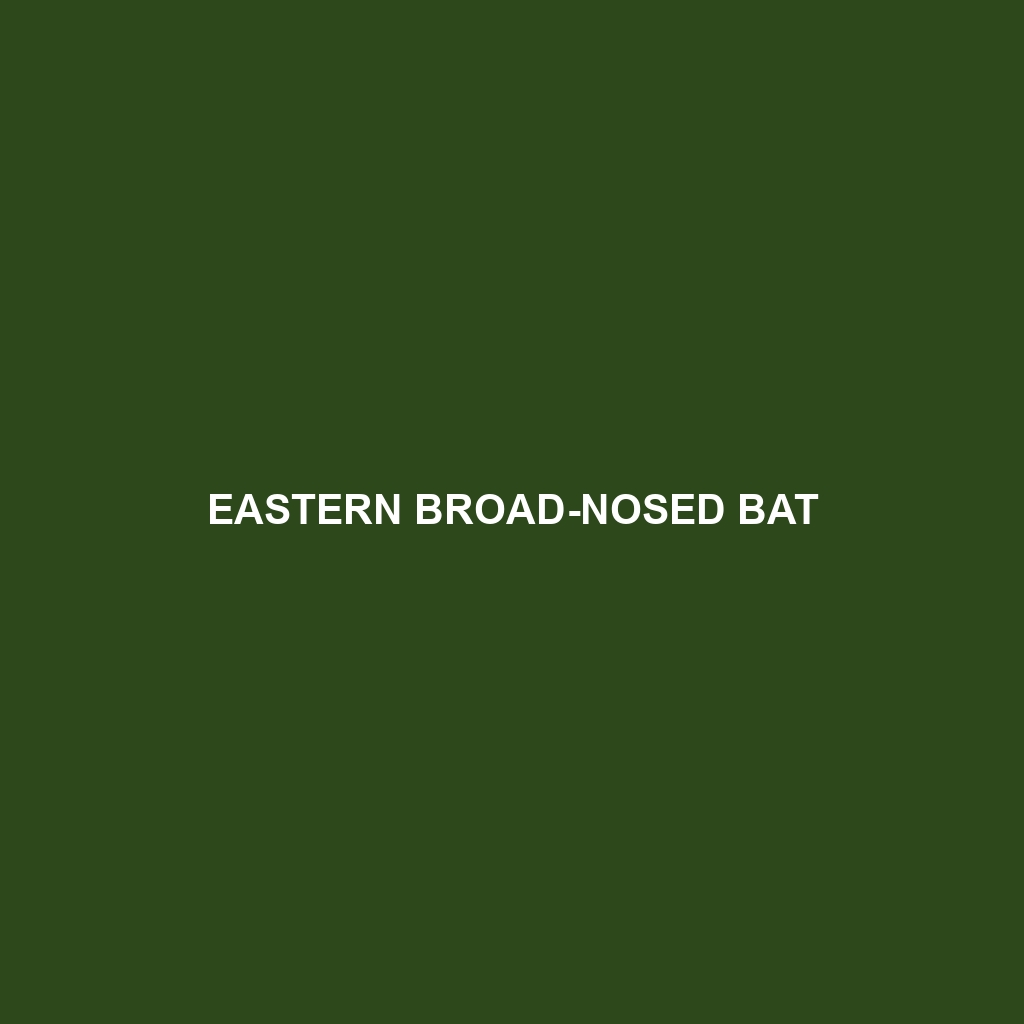Discover the fascinating world of the Thick-eared Serotine, a nocturnal bat renowned for its adaptability to urban environments and its unique thick ears that enhance its hunting capabilities. This near-threatened species plays a vital role in controlling insect populations and maintaining ecological balance, all while showcasing intriguing social behaviors and impressive agility. Join us as we explore its habitat, diet, reproduction, and significant contributions to biodiversity.
Tag: forest habitats
Big Red Bat
Discover the captivating world of the Big Red Bat (<i>Lasiurus borealis</i>), a striking nocturnal predator adorned with reddish-orange fur and distinct black facial markings. Thriving in forested areas across North America, these solitary bats play a vital role in controlling insect populations while showcasing fascinating adaptations like independently rotating ears. Learn about their unique behaviors, seasonal migrations, and conservation status in our latest blog post!
Eurasian Serotine
Discover the Eurasian Serotine, a fascinating medium-sized bat known for its nocturnal behavior and agile flight. This species thrives in diverse habitats across Europe and Asia, playing a crucial role in pest control by feeding on insects like moths. Explore its unique characteristics, reproductive habits, and conservation status in our in-depth blog post.
Big-footed Myotis
Discover the intriguing world of the Big-footed Myotis (Myotis makatori), a medium-sized bat known for its distinctive large feet and impressive echolocation abilities. Primarily found in temperate North American forests, this vulnerable species plays a crucial role in pest control while navigating both rural and urban landscapes. Learn about its habitat, diet, and the conservation efforts needed to protect this unique mammal.
Kelaart’s Pipistrelle
Discover the remarkable Kelaart's Pipistrelle, a small bat native to South Asia, particularly Sri Lanka and southern India. With its agile flight and essential role in controlling insect populations, this 'Vulnerable' species faces threats from habitat loss. Learn about its unique characteristics, social behavior, and the urgent conservation efforts needed to protect this fascinating creature and its ecosystem.
Armién’s Myotis
Discover the fascinating world of Armién's Myotis, a medium-sized bat thriving in the temperate forests of Central and South America. This species plays a crucial role in maintaining ecological balance through its insect-eating prowess and exceptional echolocation skills. Learn about its habitat, physical characteristics, behavior, and the urgent conservation efforts needed to protect this vulnerable species.
Mountain Noctule
Discover the captivating world of the Mountain Noctule (Nyctalus lasiopterus), Europe's impressive bat species that thrives in mountainous forests. With a remarkable wingspan of up to 40 cm, these nocturnal foragers play a vital role in maintaining the ecosystem by controlling insect populations and contributing to soil health. Learn about their unique behaviors, breeding habits, and the conservation challenges they face in today's changing environment.
Western Barbastelle
Discover the fascinating Western Barbastelle (<i>Barbastella barbastellus</i>), a medium-sized bat thriving in Europe’s temperate woodlands. With unique hunting techniques and distinctive rounded ears, these nocturnal creatures play a vital role in controlling insect populations and promoting forest health. Despite their ecological importance, the Western Barbastelle faces threats like habitat loss and climate change, leading to its vulnerable conservation status.
Chocolate Pipistrelle
Discover the intriguing world of the Chocolate Pipistrelle (Pipistrellus rusticus), a small bat species renowned for its unique chocolate-brown fur and agile nocturnal behavior. Found across Europe and western Asia, these bats thrive in diverse habitats and play a vital role in controlling insect populations, consuming up to 3,000 insects each night. Despite their adaptability, the Chocolate Pipistrelle faces vulnerabilities due to habitat loss and climate change, making conservation efforts essential for their future.
Corben’s Long-eared Bat
Discover the intriguing Corben's Long-eared Bat, a nocturnal marvel of the temperate forests of North America and Europe. With its long ears, impressive echolocation abilities, and vital role in controlling insect populations, this vulnerable species faces challenges due to habitat loss and pesticide use. Delve into its unique characteristics, behaviors, and conservation efforts in our latest blog post.









